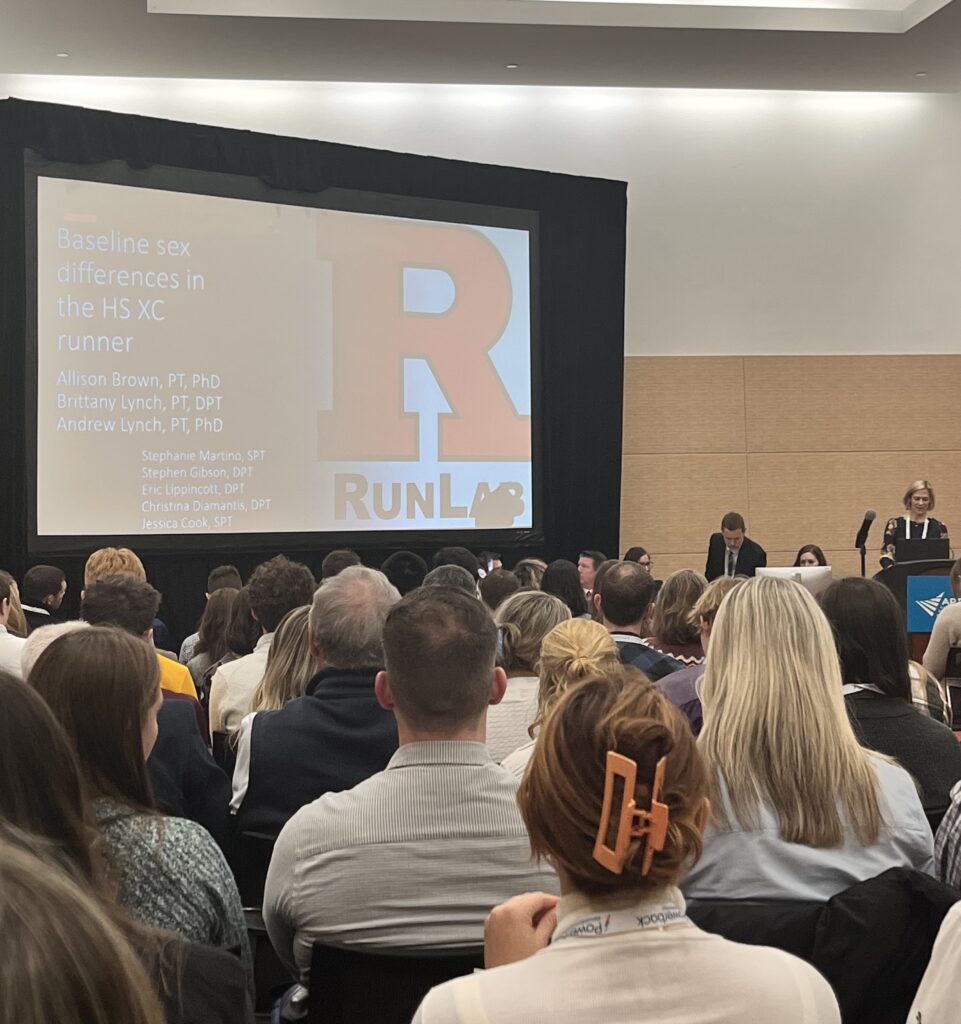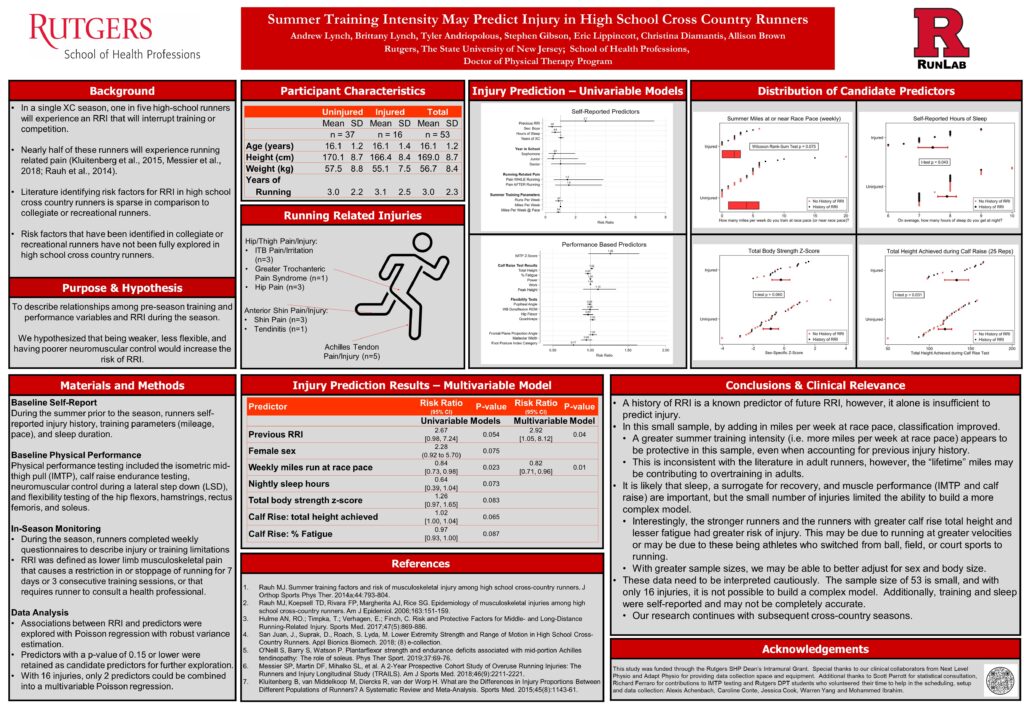Allison Brown, Brittany Lynch and Andrew Lynch each presented preliminary findings from our study with high school runners at the Combined Sections Meeting of the American Physical Therapy Association in Boston from February 14-17.
Allison presented “Baseline Sex Differences in the High School Cross Country Runner” in the Science-Meets-Practice session: “Kids are Not Small Adults: Comprehensive Management of the Adolescent Long-Distance Runner” . In her presentation, Allison shared the baseline clinical and biomechanical measures taken during our first pre-season data collection. These baseline variables were examined to determine if sex differences existed as well as providing the audience with baseline information that can be used for comparison to injured runners. Our work found sex differences in bimalleolar width and strength measures. Specifically, adolescent boys had a greater malleolar width and demonstrated greater peak force and rate of force development on the isometric mid-thigh pull, a surrogate measure for total body strength. Adolescent boy runners also generated greater power during 25 repeated calf raises. No other differences were found between boy and girl runners, however high school cross country runners were shown to have limitations in lower extremity flexibility and either neutral or pronated feet.

Andrew and Brittany presented a poster titled “Summer Training Intensity May Predict Injury in High School Cross Country Runners” on Saturday, February 17. These are the preliminary results from our 2022 study attempting to predict injury in high school runners using training and physical performance data collected in the summer before the cross-country season. Of the 51 runners who participated, 16 experienced a running related injury. A history of running related injury is an important predictor of future injury in runners, and we found that as well. In addition, we also found that getting more sleep and logging more high intensity miles in the summer may help to reduce the odds of injury during the season. Interestingly, it also seemed that runners with better total body strength and calf muscle performance were at greater risk of injury. These preliminary results are certainly interesting and need to be explored in a larger sample to make more definitive conclusions.
You can see a write up on our lab from the Rutgers SHP website.
